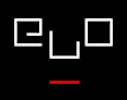Your cart is currently empty!
Showcase
-
Prince of Persia: The Sands of Time
Jordan Mechner is the writer and designer of groundbreaking cinematic games such as Karateka (1984), Prince of Persia (1989), and The Last Express (1997). His most recent, in collaboration with… Read more.
·
-
Shandean Ambles
Laurence Sterne’s Tristram Shandy is the 18th century’s answer to Douglas Adams — irreverent, funny, and surprisingly hypertextual. Shandean Ambles (drafted at the Shandy Hall under Sterne’s imposing nose) parodies… Read more.
·
-
The Breakup Conversation
The Breakup Conversation is a satirical simulation of the conversation at the end of a romantic relationship. The player is expected to perform a breakup over instant messenger, while the… Read more.
·
-
Word Museum
Word Museum was created for the Brown University “Cave” — a room-sized virtual reality display. It asks how one can integrate writing into a scalable 3D space when it seems… Read more.
·
-
Sunshine 69
Bobby Rabyd, a.k.a. Robert Arellano, details the “Summer of Hate” by relating intermixed stories of death in the San Franciso Bay area in 1969. Sunshine ’69 was the first Web… Read more.
·
-
These Waves of Girls
This novella was winner of the 2001 Electronic Literature Award for fiction. Larry McCaffrey, who judged the contest, said of it: “Once inside the work itself, users encounter a series… Read more.
·
-
Zork
This all-text game improved upon Adventure by better understanding commands, more richly simulating its world, and adding a character, the theif, who appeared throughout to challenge and motivate the player.… Read more.
·
-
Solitaire
In this game of Solitaire the reader has a hand of three cards. Each card holds an image and a text, each portraying a stark moment in a potentially disturbing… Read more.
·
-
Screen
Screen was created in Brown University’s “Cave,” a room-sized virtual reality display. It begins as a reading and listening experience. Memory texts appear on the Cave’s walls, surrounding the reader.… Read more.
·
-
Glide
The Glide project encompasses a constructed language, a game played with that language, an online space for communication via the language, and an oracle that delivers its messages via the… Read more.
·
